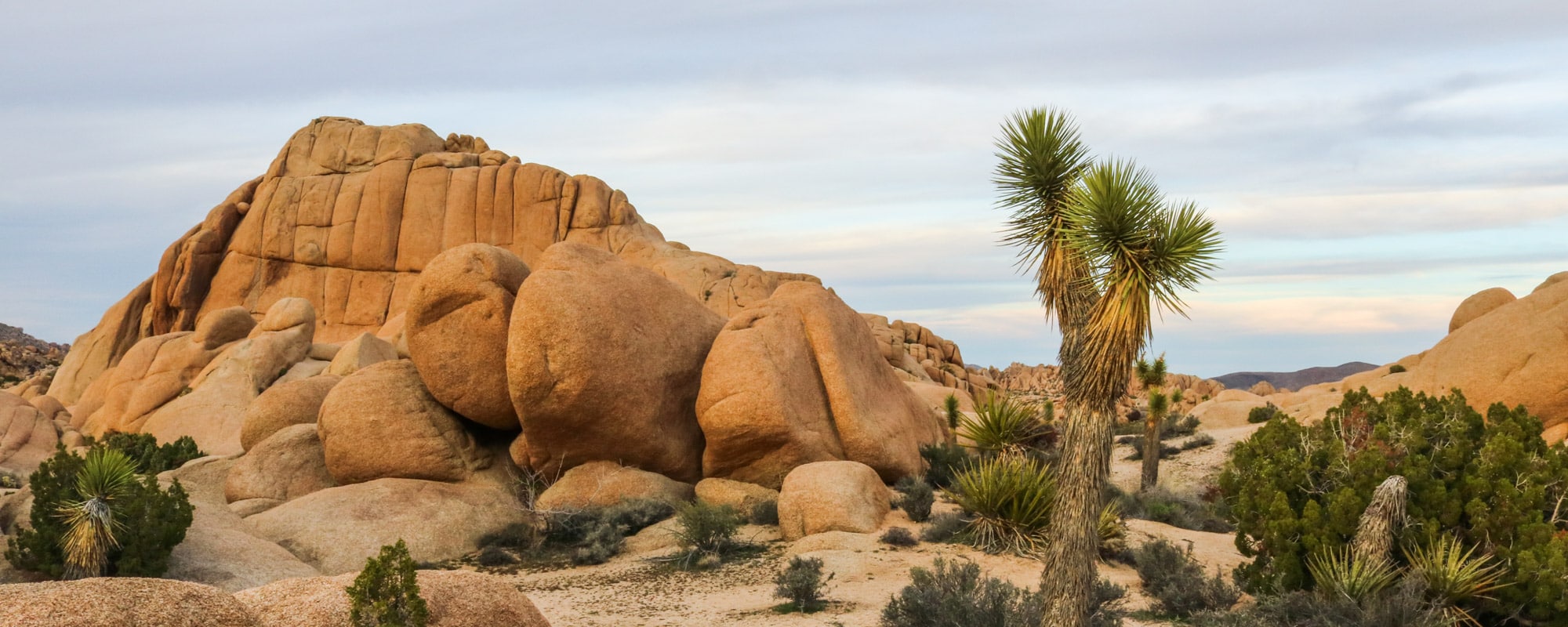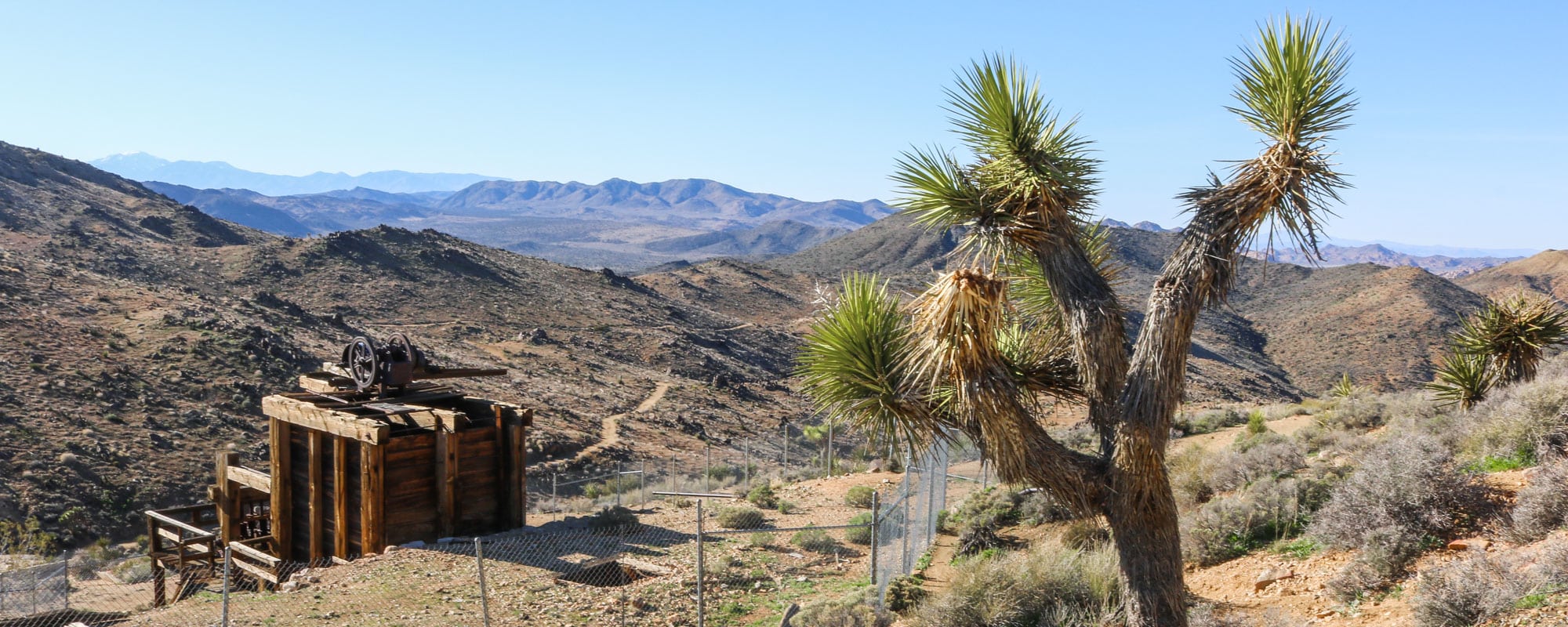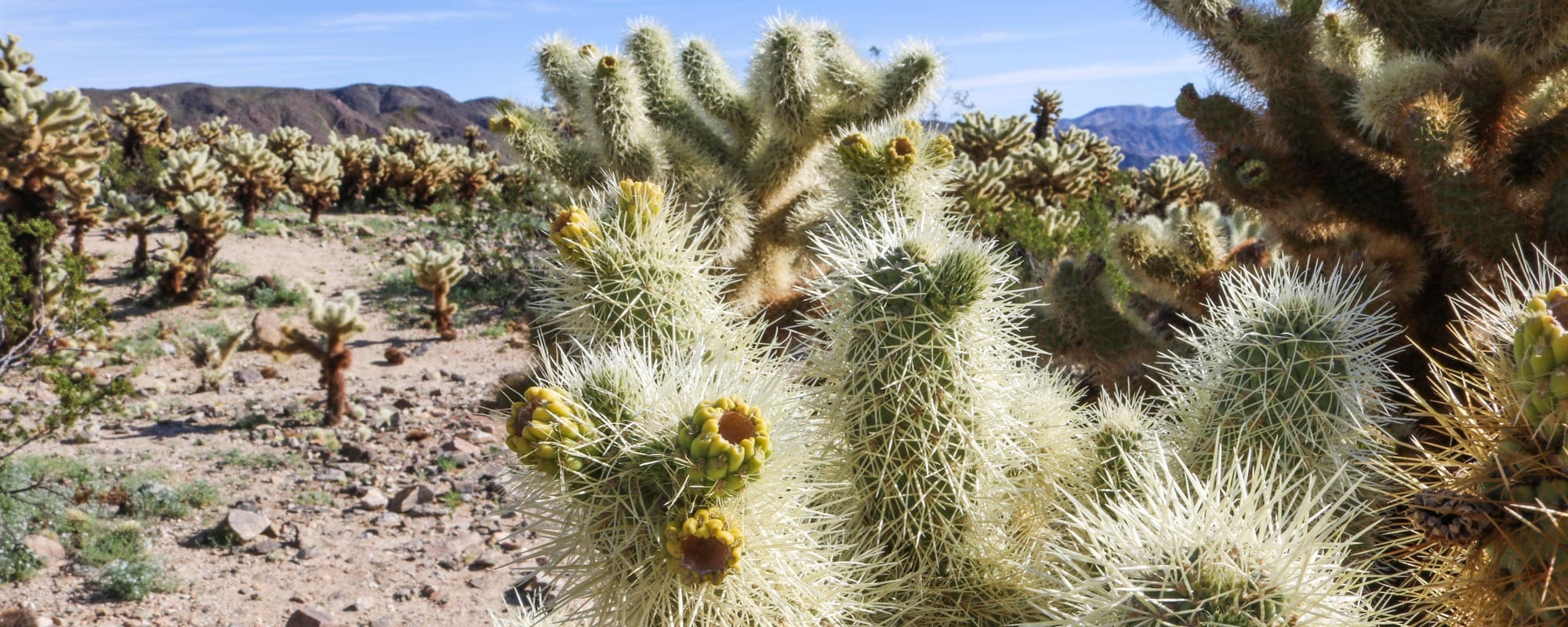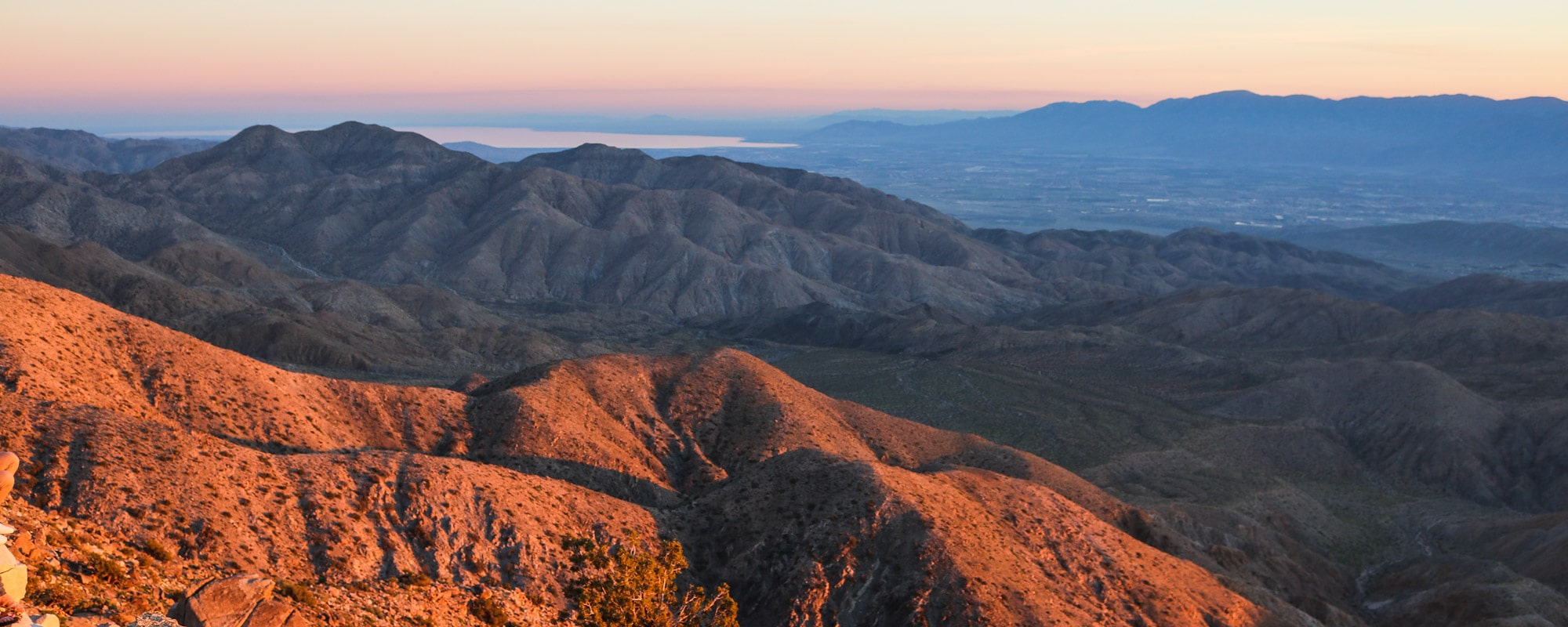The meeting point of the Mojave and Colorado Deserts, Joshua Tree National Park comprises diverse landscapes, home to abundant wildlife and offering a wide range of outdoor recreation opportunities.

Iconic Joshua trees stand tall in a desert landscape dominated by huge jumbles of rock. Arid hills form a remarkable backdrop. Blue skies offer a stark contrast to the yellows, browns and greens of this unique scenery.
Roadrunners scurry across the sandy desert floors while ravens circle overhead. Rattlesnakes hunt spiny lizards and kangaroo rats, hummingbirds feed on blossoming bushes, and bighorn sheep hop about boulders.
Filled with rough-surfaced boulders and huge piles of rocks, this is one of the best U.S. national parks for rock climbing and bouldering. Hikers and campers, too, will find enjoy exploring this amazing desert park in Southern California.
Joshua Tree National Park is exceptional in the sense that it’s the meeting place of two huge deserts.
It lies at the very intersection of the Mojave and Colorado Deserts, the latter of which is actually part of the much larger Sonoran Desert that stretches south into Mexico.
This results in a wide variety of landscapes, as well as fauna and flora. The Mojave Desert, in the northwestern part of the park, is more than 3,000 feet above sea level, making it a relatively cool desert. This is where you’ll find almost all of the Joshua trees and the boulders that typify the park’s landscapes.
In the southeast, the lower-lying Colorado Desert is much hotter. There, cacti and ocotillo plants dot bone-dry, rocky hills. In spring, wildflowers carpet the desert floor, turning the otherwise monotone desert into a colorful spectacle.
The drive from one part to the other is fantastic, clearly showing how one type of desert slowly changes into another.
From boulders and rugged mountain summits to abandoned gold mines, palm oases and those strange-looking trees—they’re actually a type of yucca and not a tree at all—, there’s plenty to keep you busy.

This Joshua Tree National Park information page contains affiliate links. You can read more about our Terms of Use / Disclosure here.
Highlights of Joshua Tree National Park
There are plenty of things to see and do at Joshua Tree, from historic gold mines and desert oases to hiking and rock climbing. These are some of the park’s top attractions.
- Keys View (epic sunset views of the Coachella Valley)
- Lost Horse Mine (remains of one of the most productive gold mines in the region)
- Lost Palms Oasis (largest collection of California fan palms in Joshua Tree National Park)
- Hidden Valley (hiking, rock climbing and bouldering, Joshua trees and wildlife)
- Cholla Cactus Garden (patch of desert filled with prickly cholla cacti)
- Barker Dam (hiking, petroglyphs, historic water reservoir, Joshua trees and wildlife)
Recommended Hikes
Hiking in Joshua Tree National Park is so rewarding because of the park’s huge diversity in landscapes.
The trails give you the chance to explore various landscapes and experience how different deserts can be. The occasional wildlife sighting only adds to the beauty of these hikes.
Note that hiking is not recommended in summer. If you’re planning on doing some serious hiking in Joshua Tree, you should visit in spring or fall, when temperatures are bearable.
- Hidden Valley (1-mile loop past huge piles of boulders and numerous Joshua trees)
- Lost Horse Mine (4 miles out and back or 6.5-mile loop to an old gold mine)
- Lost Palms Oasis (7.5 miles out and back to a large California fan-palm oasis)

When to Visit?
The comfortable temperatures of spring make this the best time of the year to visit Joshua Tree National Park. This is definitely the busiest period, so keep that in mind when planning your visit.
Campgrounds will fill up by noon at the latest; make sure to arrive early in the morning.
Just like in the other Southern California desert parks, Joshua Tree gets excessively hot in summer. Winter nights are cold. Spring (and fall as well) offers cool nights, warm afternoons and a plethora of glorious sunshine.
Accommodation Near Joshua Tree National Park?
If you want to spend the night in Joshua Tree National Park, you’ll have to camp. The only type of accommodation within the park’s boundaries are campgrounds.
Most of them have only basic facilities like pit toilets, fire grates and picnic tables—nothing more. Water in the park is scarce and not available at the majority of the campgrounds.
However, it’s exactly that primitiveness of those campgrounds that makes them so appealing. There are several campgrounds in the park, but arguably the best one is the first-come first-served Jumbo Rocks Campground, set amid large boulders and dotted with Joshua trees.
If you’re looking for a hotel or motel to stay, you’ll find plenty of options in surrounding towns like Twentynine Palms, Yucca Valley and Palm Springs.
Booking.com
Useful Info
Location: Southern California
Nearest Towns: Twentynine Palms, Joshua Tree and Yucca Valley
Area: 1,242.4 square miles (795,156 acres)
Annual Visitors (2022): 3,058,294
Features: Joshua trees, boulders and rocks, historic mining sites, California fan-palm oases, desert landscapes
Top Attractions: Keys View, Lost Horse Mine, Lost Palms Oasis, Cholla Cactus Garden, Hidden Valley, Barker Dam
Popular Activities: Rock climbing, mountain biking, hiking, camping, horseback riding, stargazing
Suggested Stay: 3 days / 2 nights
Campgrounds:
- Belle Campground (18 sites)
- Black Rock Campground (99 sites)
- Cottonwood Campground (62 sites)
- Hidden Valley Campground (44 sites)
- Indian Cove Campground (101 sites)
- Jumbo Rocks Campground (124 sites)
- Ryan Campground (31 sites)
- White Tank Campground (15 sites)
More Information: National Park Service
Nearby National Parks:
- Death Valley National Park, California
- Channel Islands National Park, California
- Grand Canyon National Park, Arizona




